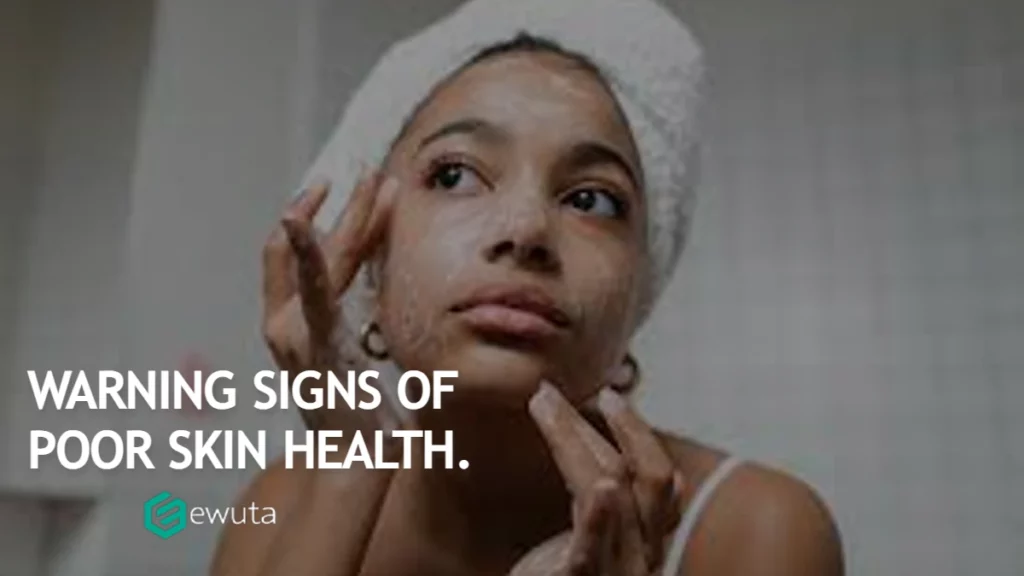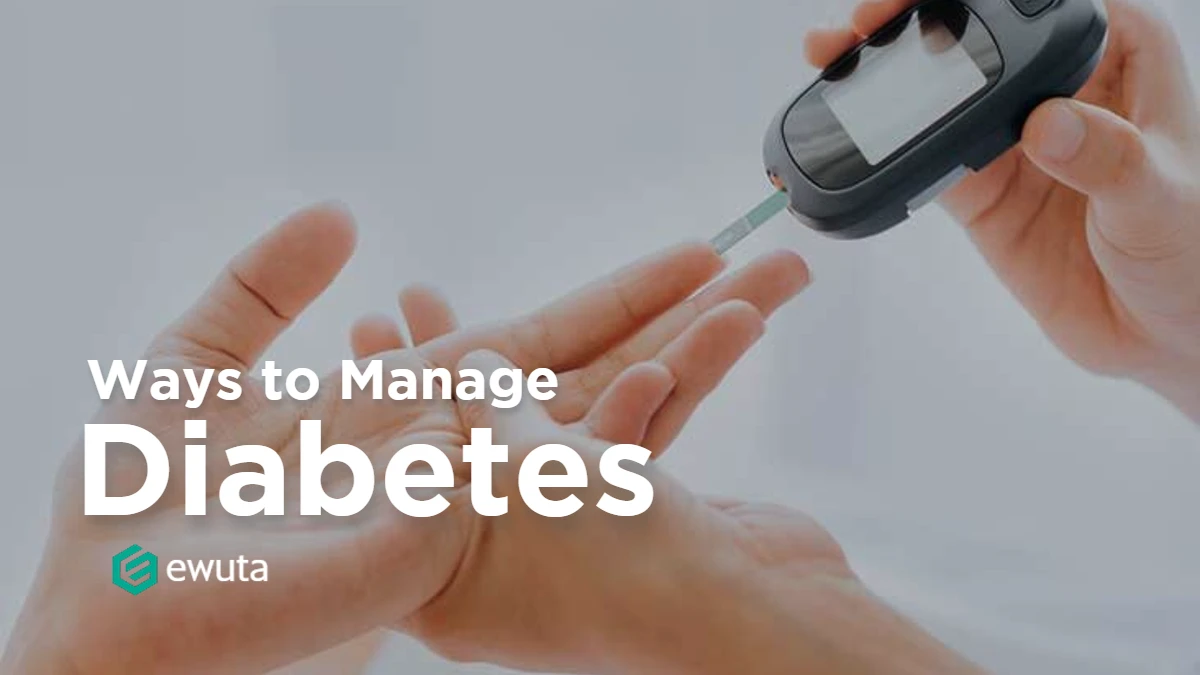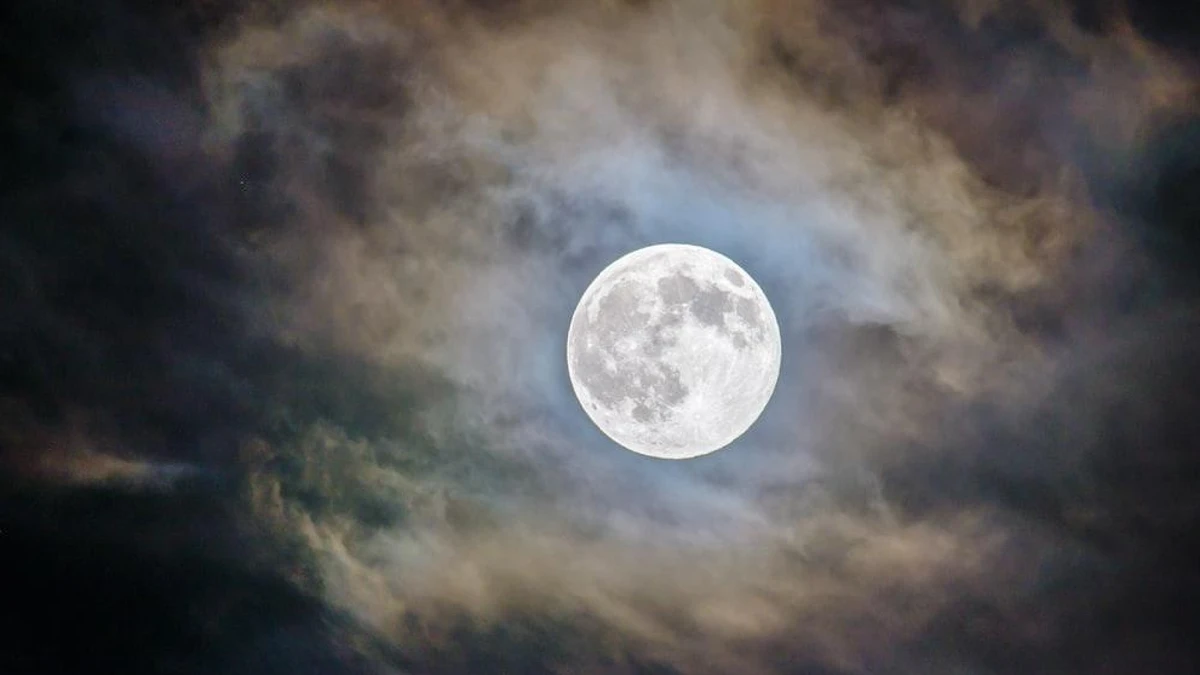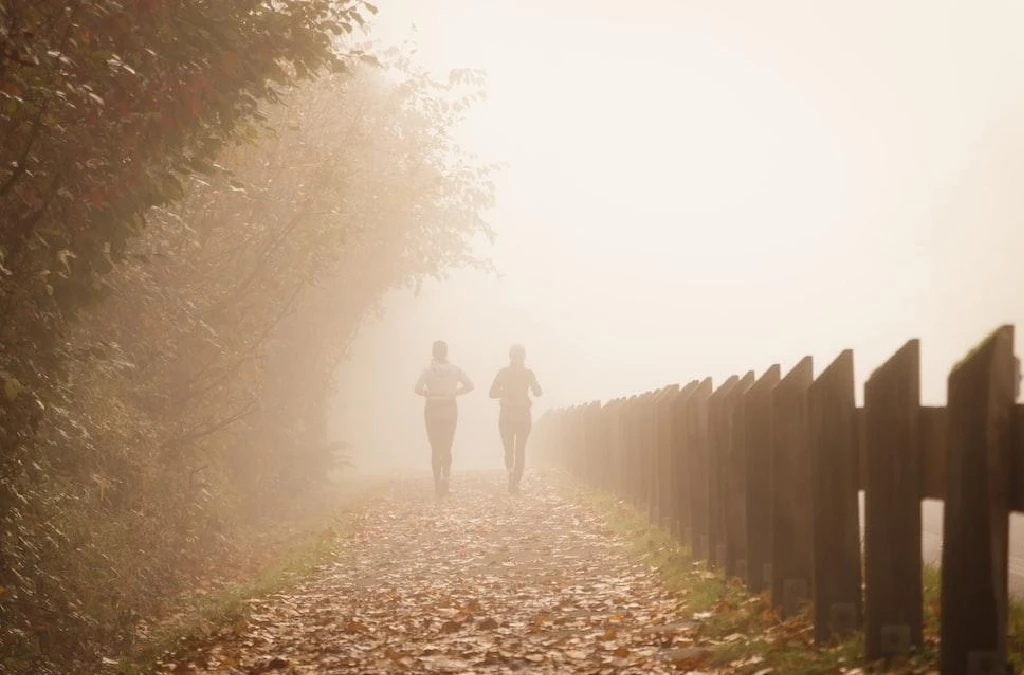Your skin can say a lot about your overall health. There are many factors that may influence the way our skin looks, from unhealthy diets to stress and injuries. This is why it is crucial to learn how to recognise the messages that your skin is sending you and take steps to improve your skin health.

Beautiful and glowing skin gives the impression of vitality and a healthy lifestyle. However, if your skin appears less than optimal, this may signify the presence of deeper problems. Today we’ll explore eleven warning signs of poor skin health and the best actions to take next.
1. Flaky Skin
If you have white flakes peeling and falling from your face, this may be a sign of other conditions, such as eczema. It is important to examine your habits and uncover the cause of your skin’s flakiness. There are many things that can wreak havoc on your skin, such as an overabundance of hot showers, overuse of harsh soaps and detergents, or not drinking enough water.
Be sure to keep your skin moisturised to restore it. Although dry and flaky skin is not a devastating condition, you may need to visit a dermatologist if you cannot get skin flakiness under control.
2. Red Skin With Silver Scales
When red patches pop up on your skin, along with silver scales, you are likely experiencing psoriasis. This is an autoimmune disease, which prompts cells to multiply too rapidly, and may even affect the joints and nails. You can learn more about psoriasis here, including different types, possible causes, and common treatments.
Also, find out how psoriasis is diagnosed and what other problems may be related to this condition. Patient provides trusted clinical information, which is designed to help you take charge of your health. Their extensive library is created by trained medical professionals, where you can find plenty of helpful healthcare resources.
3. Tight Skin
Many people believe that if your skin is tight after washing, then it means it is healthy. However, the opposite is true, as tight skin often signifies damage. To avoid this problem, it is advisable to use gentle products to cleanse your skin. Also, you may want to look at the ingredients in your makeup.
This is because it is possible that you have sensitive skin without realising it. Some ingredients can be more irritating to people with sensitive skin than others. One of the best ways to find out is to observe your skin over a period of days after using makeup.
4. Hyperpigmentation
Hyperpigmentation is a condition which causes dark spots to appear on your skin. There are several causes that may be worth exploring. For example, your skin may be sensitive to trauma, which can result in the appearance of dark spots. Also, UV light is one of the most common causes of hyperpigmentation, especially if you have spent too much time tanning.
Alternatively, dark spots might be a sign of an underlying health condition, such as liver disease. Therefore, prevention is crucial when it comes to avoiding hyperpigmentation. Remember not to spend too much time in the sun and consult your doctor if you are concerned about your skin.
5. Moles
Moles are often referred to as beauty marks, but they can be indicative of serious health issues. These coloured and raised areas of skin may be a sign of skin cancer. They can display various characteristics, such as raised reddish spots, which can have an almost pearl-like colour. Other types of moles may also appear in different colours and have irregular shapes.
The most important factor when it comes to minimising your risk of developing skin cancer is protection from sun exposure. This means that you should apply sunscreen to your skin daily, and not only on the days you are at the beach.
6. Excessive Acne
Acne can be a sign of distressed skin, so you should pay attention to its symptoms. For example, getting a zit every once in a while likely means that you don’t have a serious issue. However, if you experience constant breakouts, then it may be time to think about changing your skincare or makeup routine.
Remember to wash your face with a gentle cleanser and avoid sleeping with your makeup on. If the problem persists, it is best to look at medical treatments or schedule an appointment with your dermatologist.
7. Dull Skin
Dull skin is often caused by a myriad of lifestyle factors, such as dehydration, smoking, a lack of sleep, excess stress, and poor skincare. Your skin constantly sheds dead cells, but if this process doesn’t work as well as usual, your complexion may develop an unhealthy and tired appearance.
Thankfully, you can take matters into your own hands by maximising your moisturiser, applying a weekly face mask, making exfoliation part of your routine, and drinking plenty of water. It is often the little things that can make a huge difference when it comes to your skin health.
8. Chapped Lips
As strange as it may sound, the skin on your lips is the most vulnerable to dehydration and other factors, since it is the thinnest on your entire body. This means that it can easily crack and bleed, if not taken care of properly. Consequently, your lips can become inflamed and sore, if left untreated.
They can quickly dry out without proper hydration. If you are not drinking enough water, your body will not be able to maintain the required moisture levels in your lips. To treat chapped lips and prevent discomfort, you may also need to apply a lip moisturiser.
9. Wrinkles
Wrinkles are an inevitable result of ageing, but if they appear in unusual places, this could signal a more serious issue. For instance, wrinkles on the inner part of the upper arm are less likely to show sun-related damage but can indicate high blood pressure and a higher risk of heart disease.
Also, there are many factors that may contribute to the appearance of premature wrinkles, such as smoking, alcohol consumption, and sun exposure. Some reliable ways to ward off premature wrinkles include reducing stress, applying sunscreen daily, eating a healthy diet, and staying hydrated.
10. Varicose Veins
Similar to wrinkles, varicose veins are another by-product of ageing, but they may also be a sign of a deeper problem. For example, this may lead to a skin condition, called varicose eczema, which causes itchy and swollen skin. While on lighter skin it will look red or brown, on darker skin it will appear dark brown or purple.
Some people may also experience discolouration of the skin, tender and tight skin, and small white scars. It is essential to prevent the development of varicose veins by taking frequent breaks, exercising regularly, and avoiding standing or sitting still for a long time.
11. Red Bumps
Red bumps that cannot be squeezed and give the appearance of a blush across the face are often a sign of rosacea. The red or pink colour can usually be seen on the cheek area, forehead, and sometimes on the chin. Rosacea affects adults from ages 30 to 50 and both men and women are vulnerable to the condition.
Although women seem to be affected more, men tend to have more severe cases. The condition can be treated by using oral antibiotics and topical creams, as they have been proven to lessen the appearance of rosacea. Similar to acne, laser treatments and chemical peels can also alleviate the symptoms.




